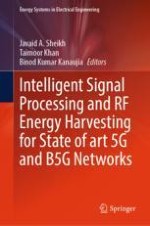The book covers all the emerging paradigms of machine learning and bio-inspired algorithms and their synergies with communication networks which may prove to a core 5G and 6G enablers. It consists of 11 chapters with varied fields. The book introduces the fundamentals of broadband wireless networks and issues related to energy efficiency and optimization. Also, it discusses the efficient bio-inspired algorithms and their utility in wireless networks for 5G, B5G, and IoT. Different fitness functions for different bio-inspired and other artificial intelligence algorithms are described in the book. More importantly it also introduces the concept, implementation, and technological challenges of efficient wireless energy harvesting methods. The book discusses different methodologies for efficient antenna designs. It also covers real-time applications on the Internet of Medical Things (IOMT). The book helps the readers to understand the subject and solve many real-time issues. It proves a ready reference to the researchers working in RF, artificial intelligence, machine learning, and communication networks.
